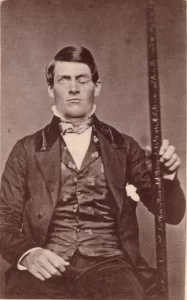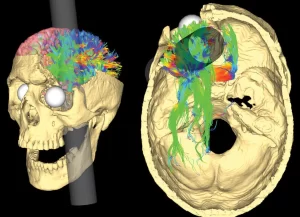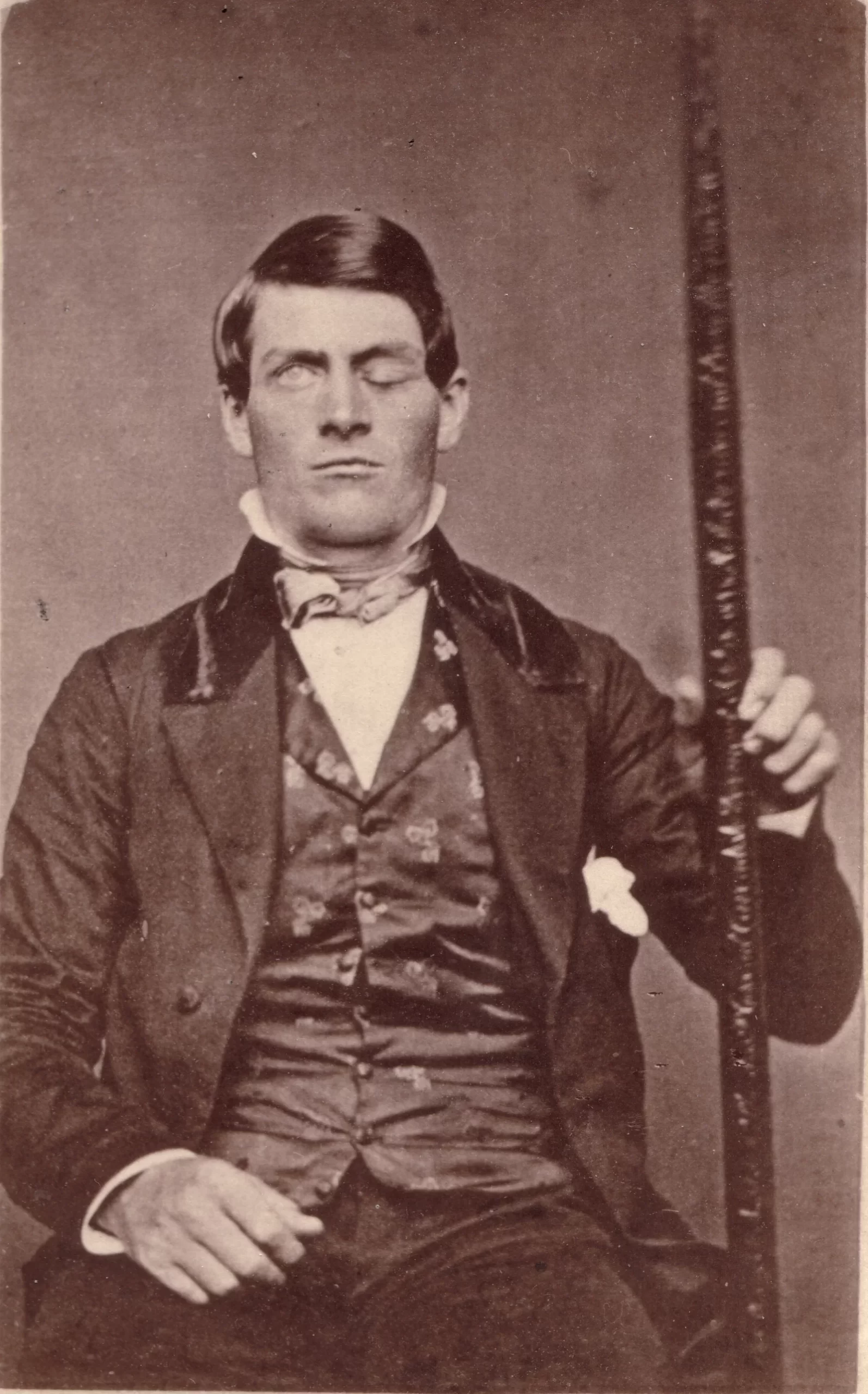In the annals of neuroscience, one name stands out like a mysterious beacon – Phineas Gage.
His story, though tragic, has become a cornerstone in understanding the intricate workings of the human brain.
In the mid-19th century, Gage unwittingly became a living experiment, providing invaluable insights into the relationship between brain function and personality.
Phineas Gage was a railroad construction foreman in Vermont, known for his reliability and steady demeanor.

Wikimedia
However, his fate took a drastic turn on September 13, 1848, when a catastrophic accident altered the course of his life and, inadvertently, the course of neuroscience.
During a routine blasting operation, an iron rod measuring over three feet long and one inch in diameter pierced through Gage’s skull, entering under his left cheekbone and exiting through the top of his head.
Astonishingly, he not only survived the traumatic event but remained conscious throughout.
Gage’s physical recovery was swift, but what truly set his case apart was the transformation in his personality.

Van Horn JD, Irimia A, Torgerson CM, Chambers MC, Kikinis R, et al./Wikimedia
Once known for his prudence and amiability, Gage became impulsive, irritable, and unreliable.
His friends and colleagues could hardly recognize the man they once knew. This sudden and profound shift in behavior sparked a scientific curiosity that laid the groundwork for our understanding of the brain’s role in personality and decision-making.
Dr. John Martyn Harlow, the physician who attended to Gage after the accident, meticulously documented the case.
Gage’s story became a pivotal point in the emerging field of neuroscience, as it raised profound questions about the localization of brain function.
It challenged the prevailing notion that the brain’s functions were diffuse and interconnected.
Modern neuroscience has embraced Gage’s tale as a touchstone for understanding brain injuries and their consequences.
The case highlighted the significance of the frontal lobes, particularly the prefrontal cortex, in regulating personality and executive functions.
Gage’s experience spurred further research, ultimately contributing to the development of our understanding of cognitive processes and emotional regulation.
Phineas Gage’s legacy endures not only in the scientific realm but also in popular culture. His story has been recounted in books, documentaries, and even inspired fictional characters.
The enduring fascination with Gage lies in the enigma of how a single traumatic incident could unravel the complex tapestry of a person’s identity.
In conclusion, Phineas Gage’s tragic encounter with the iron rod transcends the realm of personal misfortune.
It became a pivotal moment in the history of neuroscience, opening a window into the intricacies of the human brain.
His journey from a reliable foreman to a symbol of neurological exploration reminds us of the delicate balance that exists within the folds of our minds, forever linking tragedy with scientific enlightenment.
